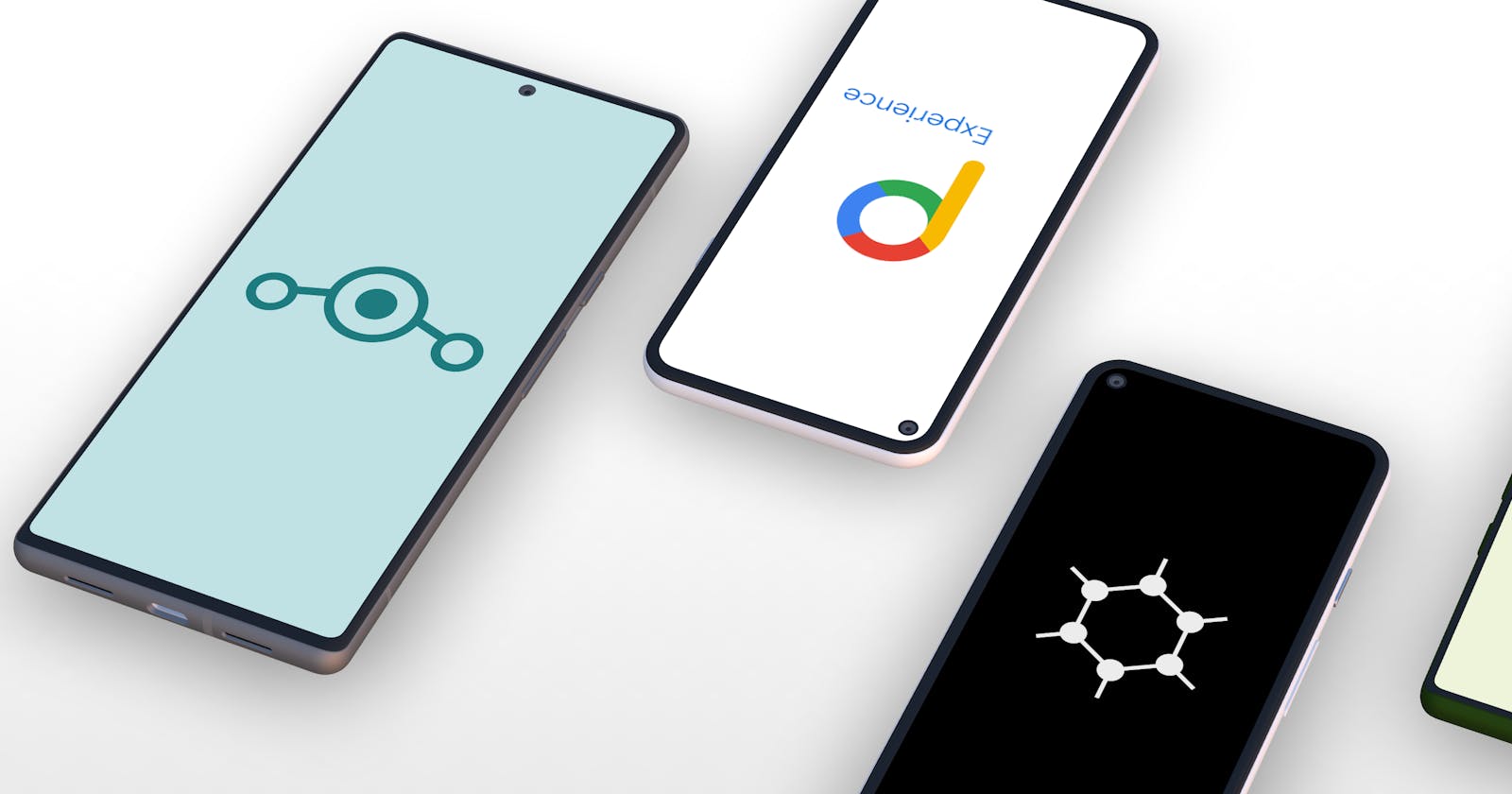Why do custom ROMs exist for Android?
Learn why Android Custom ROMs are relevant and how it can make your smartphone experience better.

Android is a mobile operating system based on Linux kernel and an open source software designed for touch screen mobile devices such as smartphones and tablets. Android is developed by developers known as the Open Handset Alliance (OHA) and it’s commercialized by Google. It is a free open source software, its source code is known as AOSP or Android Open Source Project which is primarily licensed Under Apache License. The version history of Android began with the public release of the Android beta on November 5, 2007. The first commercial version, Android 1.0, was released on September 23, 2008. Android is continually developed by Google and the Open Handset Alliance, and it has seen several updates to its base operating system since the initial release .The Last release was Android 12.1 on April 4, 2022. And google is working on Android 13 (tiramisu) and will be releasing in between August-September 2022.
Android is cross-platform meaning that android applications can run on any type of screen, size and resolutions including mobile phones, tablets etc. It means developers only need to develop for one Android device and the application can run on different devices powered by Android. Each android device comes with a particular Android version and gets updates for up to 2 to 3 years for flagship devices and 1 to 2 years for mid-range devices, and some of the low-end devices don’t even get any updates after launch. This depends primarily on the device manufacturer. There can also be a significant delay in receiving critical security patches and major Android version upgrades (for example Android 10 to Android 11) due the device manufacturer needing to customize and test Android for the particular device model. The security on older devices will be weak compared to newer devices and Android updates will be delayed. Security is also depending on the user activities on devices and apps preloaded in the phone by the OEM (Original Equipment Manufacturer). Most OEMs and users prefer customization over privacy and security. Heavily skinned stock OEM ROM will be time-consuming to be re-based into newer Android versions, so it will create a delay in updates to consumers. Custom skins might also be poor in memory management and have performance issues. Typically, updates come as a single package, both visual changes and security updates combined. So, any delay in customizing the new version to have the OEM's skin will also cause the security updates to be delayed. Also to reduce the price of the final product, OEMs preloads some apps and bake ads into the ROM. By doing this, OEM can generate income even after the device is being sold, at the cost of tarnished user experience.
Most custom ROMs are just like how Android is meant to be with only slight modifications in terms of UI and feature additions. This will ensure that there won’t be any performance drops or stability issues. Custom ROMs are built by modifying the Android source code according to our needs. Google releases the source code of Android for further development and developers will be using that to provide a bleeding edge Android build for a device which has not been updated for a long time and still runs an outdated Android version and security patch. This also improves the privacy and security of the OS from the bottom up, security of both the OS and the apps running on it by adding various features like the permission restrictions when the device is locked (like connecting USB peripherals). It's also possible to add other complex user-facing privacy and security features, like disabling all primary sensors of the device in one click. A custom ROM entirely replaces your Android operating system.
AOSP based Custom ROM mission is to offer the maximum possible stability and security, along with essential and useful features for the proper functioning of the mobile device. This ROM extends the functionality and lifespan of mobile devices. The custom ROM is aiming to extend the life of a mobile device by working on enhancing the already existing beauty of Android. The main principle of a Custom OS is to reduce the amount of electronic waste by providing latest Android features and other security patches to old Android phones to improve the performance and battery backup with handpicked features beautifully packed in to one OS.
Why Custom ROM ?
- To get the latest version of Android
This is the most popular reason for installing a custom ROM. The Manufacturers sometimes never update their older android phones even if it is compatible to run new versions of Android and security patches. It is done in order to diminish the value of old device and thereby increase the sales of newer devices (which will get the updates). So custom ROM is the ticket for getting new versions of Android.
- To replace Manufacturer skin with a stock version of Android
Manufactures skin or versions of Android can be replaced by stock Android which gives a clean look. The user can also customize the device to their liking. The main aim is to provide the opportunity build a unique user-interface and still have optimum performance and improved battery capacity.
- Eliminate unnecessary applications (bloatware)
When you purchase a phone from a brand like Xiaomi, it often comes with unnecessary applications (bloatware) these applications sometimes cannot be removed by the user because of the restrictions imposed by the manufacturers, carriers or vendors. These applications waste a lot of resources like memory, storage space and processing power that can otherwise be used for other useful purposes. So by installing a custom ROM, one can eliminate these apps and free up those resources. This will result in better battery backup, more storage space for other useful apps etc.
- Open-Source
Since AOSP is open-sourced by Google, custom ROMs are also mostly open-source and anyone can download the source code and build from source and use it in their phones.
- Security
Your data, your rules! With powerful tools such as privacy guard, you are in control of what your apps can do whenever you want. This will help your device security and warn about possible threats. You can decide which apps you want to install. There will be only basic apps available by default, users can decide what else to install based on their use-cases. Some of the custom ROMs come without google play services, for those who don't want Google services on their device.
Some of the popular custom ROMs:
